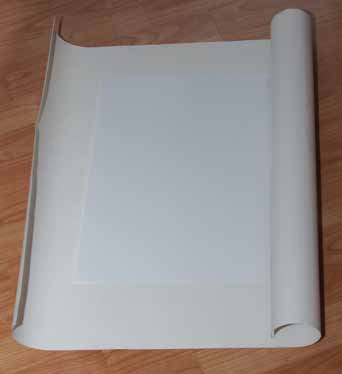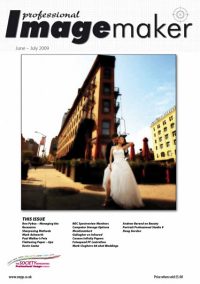articles/Paper/rollup-page2
Roll Up Roll Up Roll Up - part 2 of 1 2 3 4
by Mike McNamee Published 01/06/2009

The canvas curler in operation.
In general then, flat paper is preferred! The expense of these larger sheets of premium paper is such that it can be very annoying to waste both ink and paper on a damaged print. In addition the issues always arise as the print leaves the printer, ie you always maximise your wastage, losing ink, paper and the print!

The numbers are the heights of the paper edges above a flat surface, measured in millimetres. 'As received' is an A3 sheet of baryta 325gsm inkjet paper. After 1 minute in the de-curler the bending has halved and after 4 minutes it has almost gone completely.
The fibre-based baryta papers present a particular problem. They are physically stronger, stiffer and more prone to curl due to differential stress in the coating (and, to cap it all, the most expensive). Curl can be so severe that the paper glides sideways as it exits an Epson and ruins a print (see image). The baryta coating is also thicker and probably more sensitive to water absorption (from the atmosphere). Storage of flat sheets has also been an issue. When stored flat the paper corners have tended to curl up (think British Rail sandwiches). Papers supplied on a roll have tended to become troublesome, particularly towards the end of the roll (Epson have now gone over to using only larger core sizes for some papers).
Please Note:
There is more than one page for this Article.
You are currently on page 2
- Roll Up Roll Up Roll Up page 1
- Roll Up Roll Up Roll Up page 2
- Roll Up Roll Up Roll Up page 3
- Roll Up Roll Up Roll Up page 4
1st Published 01/06/2009
last update 09/12/2022 14:58:38
More Paper Articles
There are 23 days to get ready for The Society of Photographers Convention and Trade Show at The Novotel London West, Hammersmith ...
which starts on Wednesday 14th January 2026





